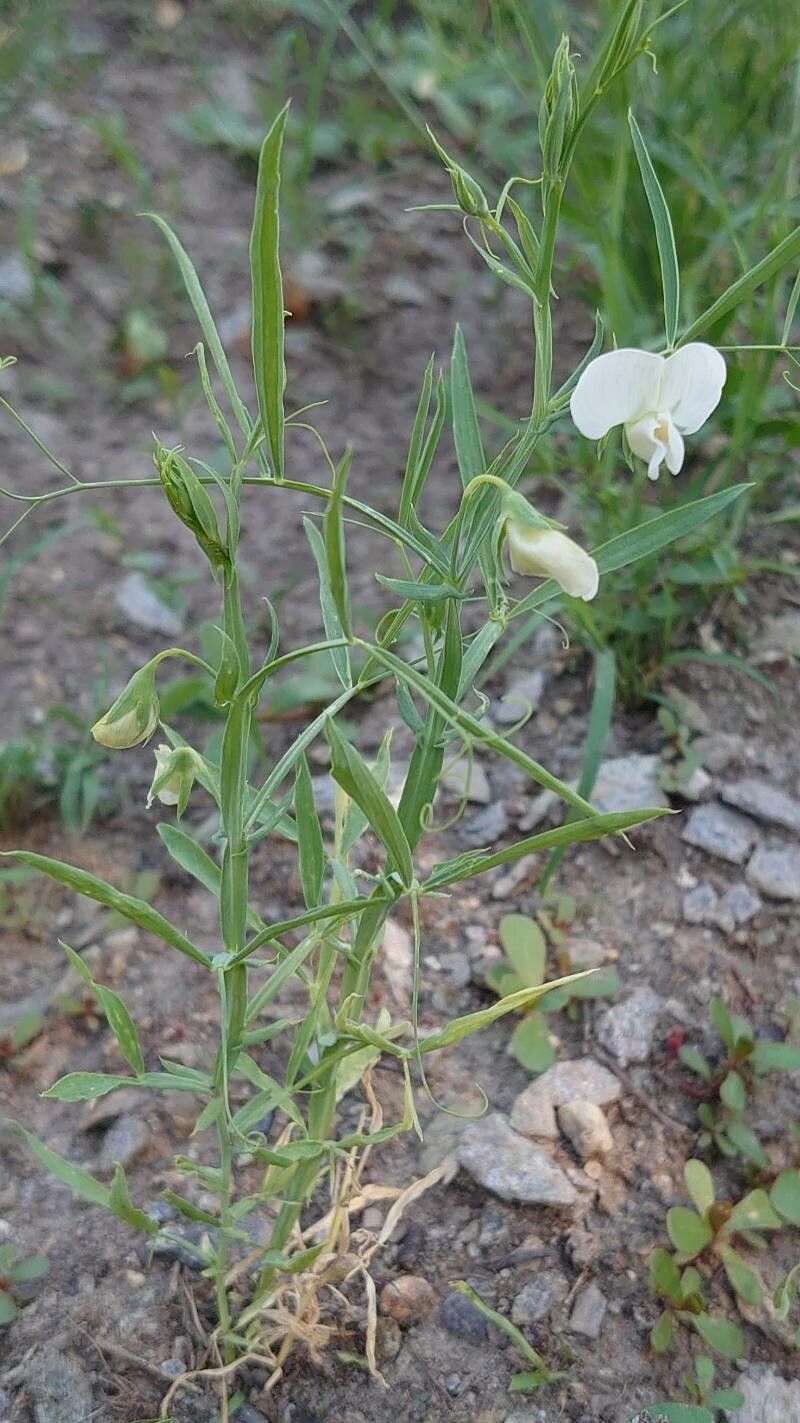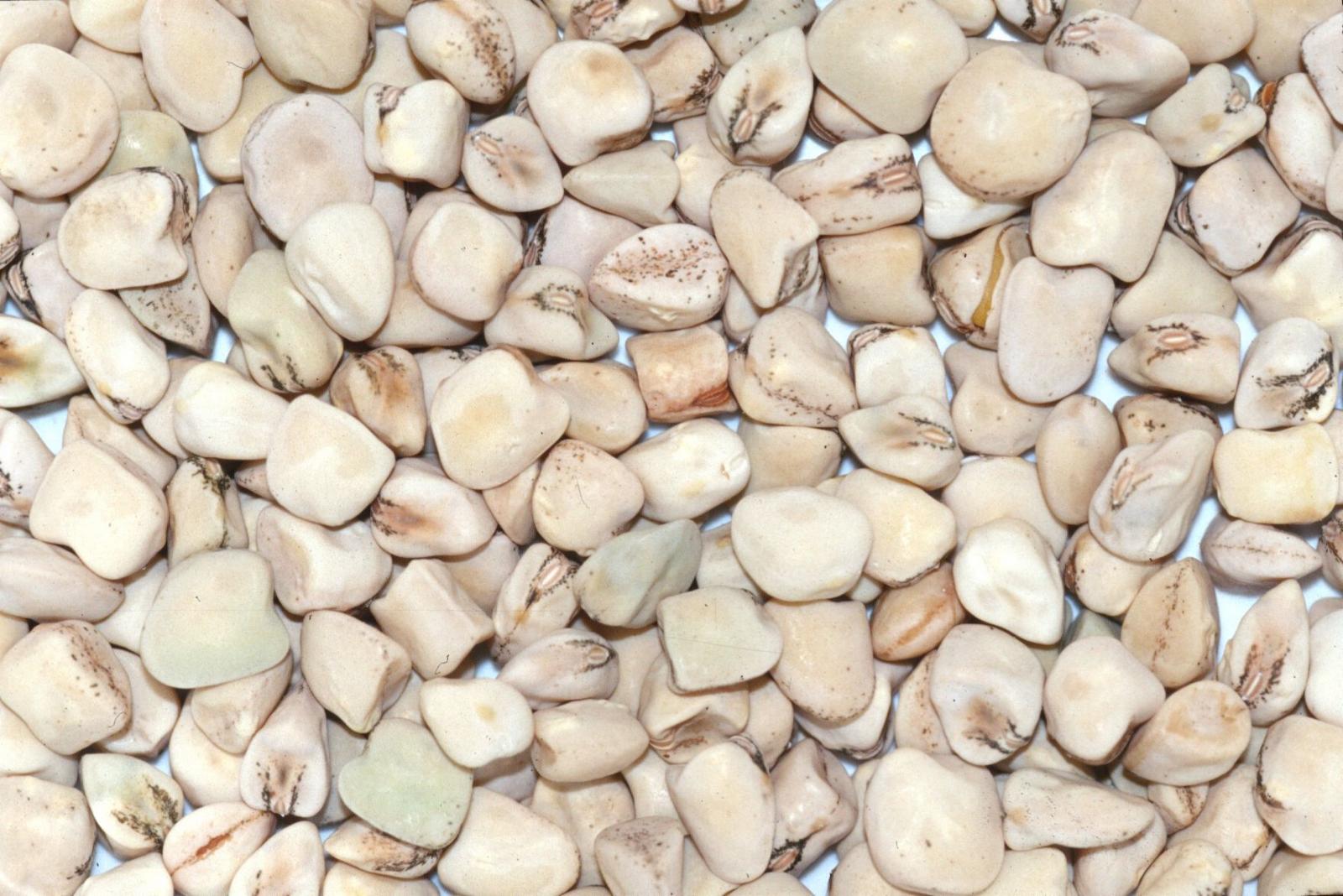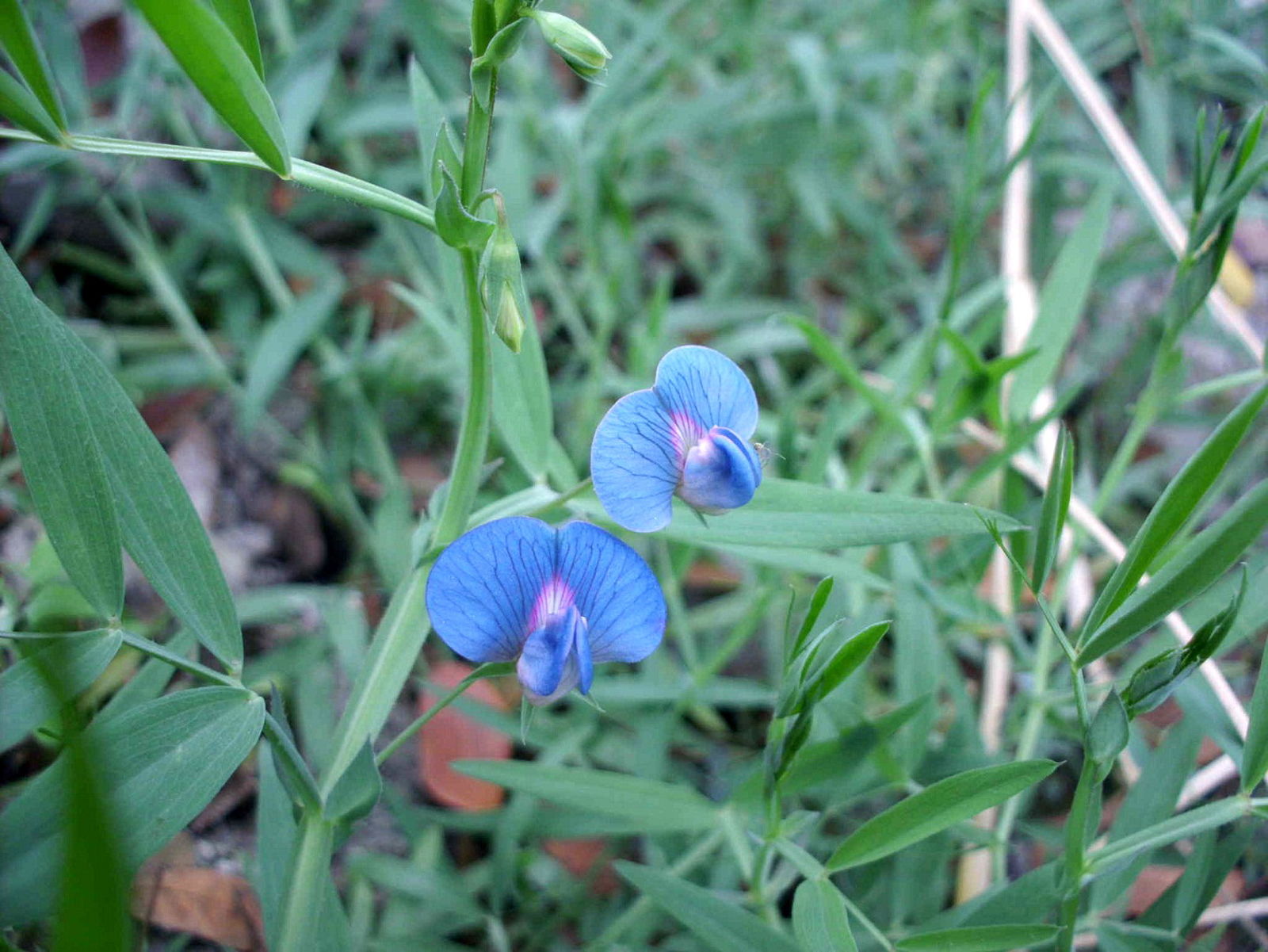Grass Pea
lathyrus sativus
Also known as: ["Grass Pea","Chickling Vetch","Indian Pea"]
Overview
A hardy annual legume native to Asia and the Mediterranean region, cultivated for its edible seeds.
Benefits & Perks
["edible fruits","drought tolerant","low maintenance"]
Botanical Classification
| Phylum: | Magnoliophyta |
| Class: | Magnoliopsida |
| Order: | Fabales |
| Family: | Fabaceae |
| Genus: | Lathyrus |
| Botanical Name: | Lathyrus sativus |
Plant Characteristics
Basic Information
- Category: Herbs & Weeds
- Suitable Location: garden bed or container in a location with good air circulation
- Suitable For:
- Is Weed: No
- Allergenicity: low
Environmental Needs
- Climate: {"temperatureRange":"5–35°C"}
- Hardiness: {"zones":"4–9"}
- Misting: rarely required, only if ambient humidity is very low
- Drainage: Fast-draining to prevent waterlogging.
- Soil Type: Well-draining loamy soil with added organic matter; can tolerate poor soils but benefits from enrichment.
Maintenance Level
- Maintenance Level: low
- Toughness Level: high
- Pruning Frequency: Light pruning can be done as needed; major pruning in late winter or early spring before new growth begins.
- Pruning Intensity: Light to moderate; avoid heavy pruning unless necessary to control size or disease.
Care Details
Ideal Sunlight Coverage:
Full sun (6–8 hours/day); tolerates partial shade but blooms best in direct sunlight.
Sunlight Tolerance Tips:
Acclimate plants gradually to full sun if moved from shade; protect from intense midday sun in hot climates; ensure adequate airflow to prevent mildew.
Care Requirements
Care Difficulty
easyeasy
Sunlight
full sun to partial shade
Rotate plants for even growth; use shade cloth in extreme heat; avoid placing in drafty areas.
Watering
every 7–10 days during active growth, reduce in winter
Water thoroughly but infrequently; ensure good drainage; avoid wetting foliage to prevent fungal diseases.
Soil
well-drained, loamy soil with moderate organic matter
pH: Slightly acidic to neutral (pH 6.0–7.0).
Avoid heavy clay soils; ensure good aeration; enrich with organic matter annually.
Temperature
Prefers 60–75°F (15–24°C); tolerates cooler temperatures but may suffer in prolonged heat above 85°F (29°C).
Avoid sudden temperature changes; protect from frost; ensure good air circulation in heat.
Fertilizing
every 4–6 weeks during growing season with balanced fertilizer
Dilute fertilizer to half strength; avoid over-fertilizing; fertilize after watering to prevent root burn.
Propagation
Methods
Seed propagation is most common; can also be propagated by division or stem cuttings.
Step-by-Step Propagation Guide
- Prepare medium.
- Plant seeds or cuttings.
- Maintain moisture.
- Provide warmth and light.
- Transplant once established.
Best Time: Spring or early summer when the plant is actively growing.
Environment
Warm (70–75°F), humid, and bright indirect light for cuttings; consistent moisture for seeds.
Medium
Well-draining seed starting mix or perlite and peat moss for cuttings.
Hormone
Not necessary for seeds; rooting hormone can aid cuttings.
Timeline
Seeds germinate in 1–3 weeks; cuttings root in 2–4 weeks and establish in 2–3 months.
Tools Needed
Seed trays, pots, rooting hormone, misting spray, heating mat (optional).
Quick Tips
Use fresh seeds for best germination; keep cuttings humid; avoid overwatering seeds.
Pruning & Repotting
Pruning Guide
Method
Pinch back tips to encourage branching; remove dead or weak stems; cut back after flowering if needed.
Pruning Plan
Prune to maintain shape, encourage bushier growth, and remove dead or diseased parts.
Tools
Pruning shears, sharp scissors, gloves.
Checklist
Clean tools; remove dead/diseased parts; shape plant; dispose of clippings properly.
Repotting Guide
Best Season
Early spring before active growth starts.
Pot Size
Increase pot size by 1–2 inches in diameter; ensure drainage holes.
Method
Remove plant gently; trim roots if needed; repot in fresh soil with good drainage; water lightly after repotting.
Suggestions
Repot every 2–3 years or when roots fill the pot; beneficial for container-grown plants.
Checklist
Choose new pot; prepare fresh soil; handle roots carefully; water after repotting; place in appropriate light.
Advanced Care Tips
Watering Mastery
Watering Checklist
Check soil moisture; water deeply; ensure drainage; avoid wetting leaves.
How to Apply Water Properly
Water at the base of the plant, focusing on the root zone; water until it drains from the bottom; avoid overhead watering to reduce disease risk.
Watering Schedule Tips
Water deeply once the top inch of soil is dry; reduce frequency in winter to prevent root rot.
Soil Improvement
Add compost or well-rotted manure; incorporate perlite or sand for drainage; use organic mulch to retain moisture.
Temperature Stress Management
Signs of Temperature Issues
Wilting, yellowing leaves, stunted growth, or bud drop in extreme heat or cold.
Cold Stress
Slows growth, may cause leaf drop, and can lead to frost damage in freezing temperatures.
Solution: Provide frost protection in cold climates; move potted plants indoors during freezes; use row covers for garden plants.
Hot Stress
Leaves may scorch, flowers may drop, and growth may slow in excessive heat.
Solution: Provide afternoon shade; increase watering; use mulch to retain soil moisture.
Fertilizing Guide
Fertilizing Checklist
Check fertilizer type; dilute properly; apply during active growth; avoid winter feeding.
Fertilizing Method
Use balanced liquid fertilizer every 4–6 weeks during growing season; reduce or stop in winter.
Common Problems & Solutions
Toxicity Warning
Cats
ToxicCats are also susceptible to the neurotoxic effects of Lathyrus sativus seeds. The toxins can cause severe neurological damage, leading to motor neuron degeneration and paralysis. Cats may be particularly sensitive due to their smaller size and different metabolic pathways.
⚠️ Symptoms:
🌿 Toxic Parts:
⚡ Toxic If:
if eaten
Dogs
ToxicThe seeds of Lathyrus sativus contain neurotoxic compounds that can cause neurological damage in dogs, similar to the effects observed in humans. Prolonged or repeated ingestion may lead to neurolathyrism, resulting in motor neuron degeneration and paralysis.
⚠️ Symptoms:
🌿 Toxic Parts:
⚡ Toxic If:
if eaten
Humans
ToxicLathyrus sativus contains neurotoxic amino acids, particularly beta-N-oxalyl-L-alpha,beta-diaminopropionic acid (ODAP), which can lead to neurolathyrism, a debilitating neurological disorder characterized by motor neuron degeneration and paralysis. Chronic consumption of improperly processed seeds is associated with this condition.
⚠️ Symptoms:
🌿 Toxic Parts:
⚡ Toxic If:
if eaten
Frequently Asked Questions
Q: Is Lathyrus sativus safe for human consumption?
A: Yes, but excessive consumption may lead to lathyrism, a neurological disorder.
Q: How do I grow Lathyrus sativus?
A: Sow seeds in well-drained soil in full sun or partial shade, water moderately, and harvest when pods are mature.
Q: Does Lathyrus sativus attract wildlife?
A: It can attract some pollinators but is not a primary wildlife attractant.
Quick Reference
| Family: | Fabaceae |
| Care: | easy |
| Light: | full sun to partial shade |
| Water: | every 7–10 days during activ |
Get Expert Care Tips
Download the Plantious app for personalized care reminders and plant identification!
Google Play App Store








